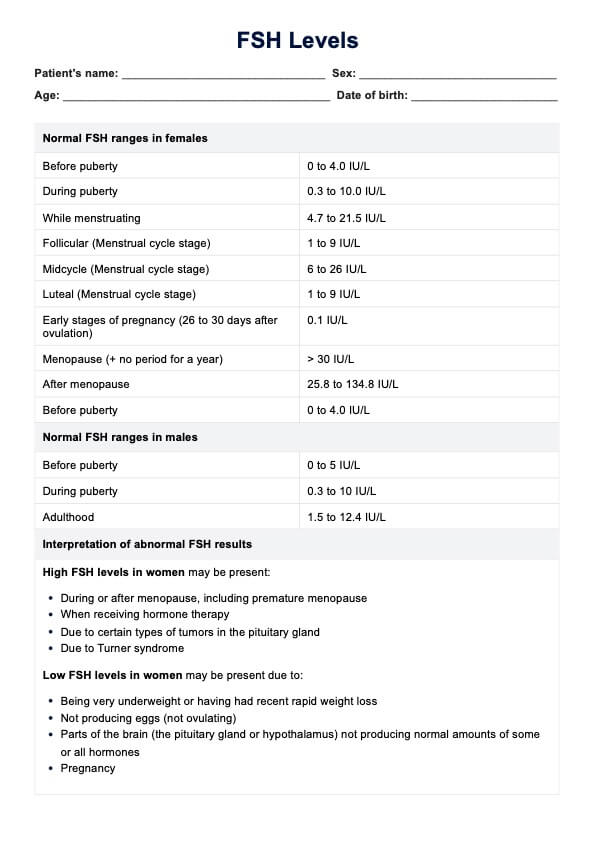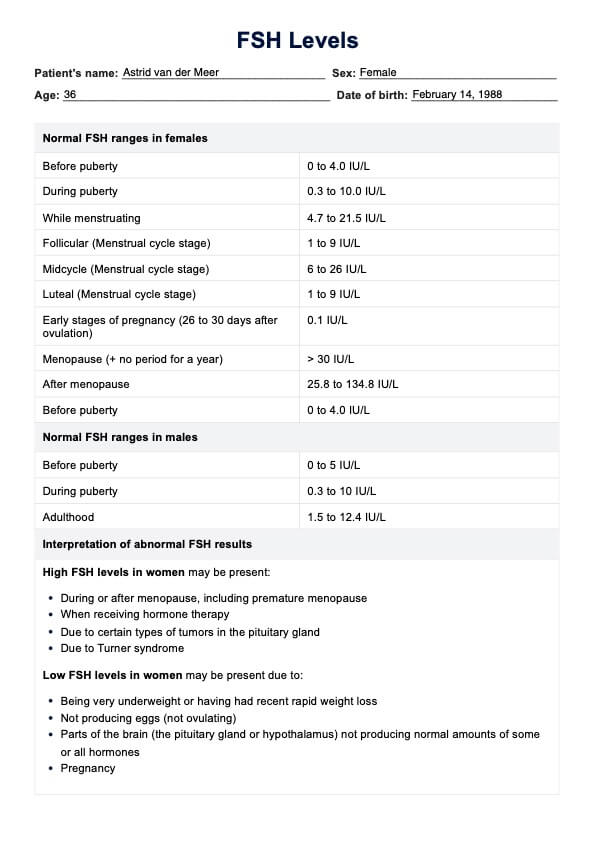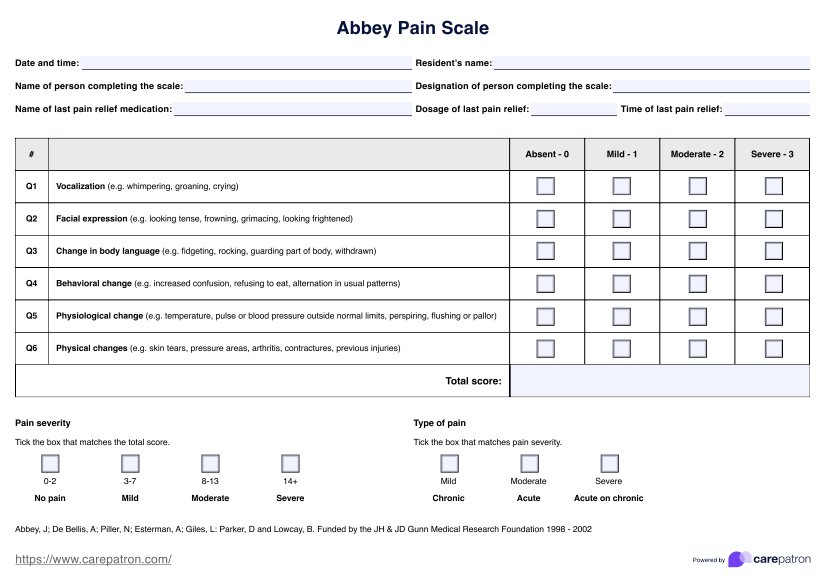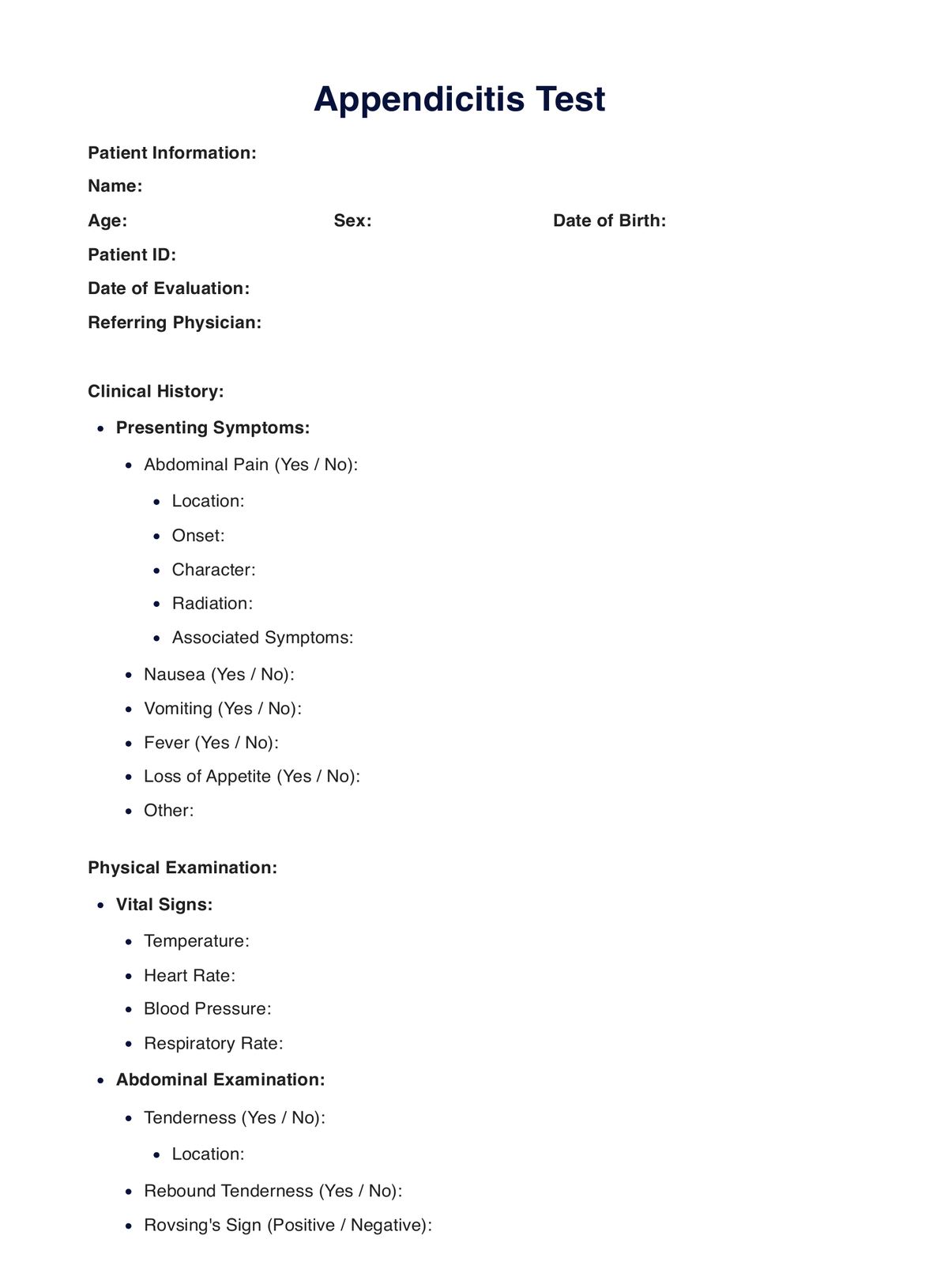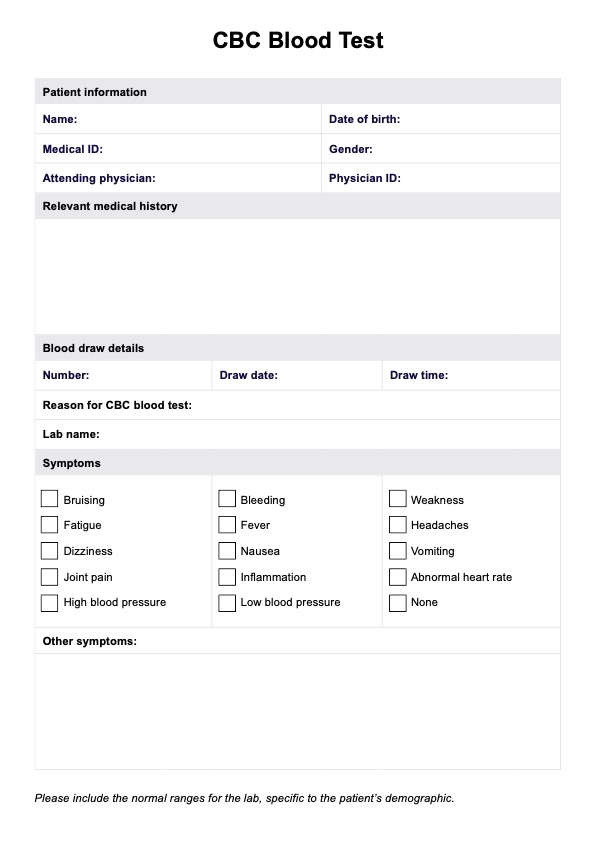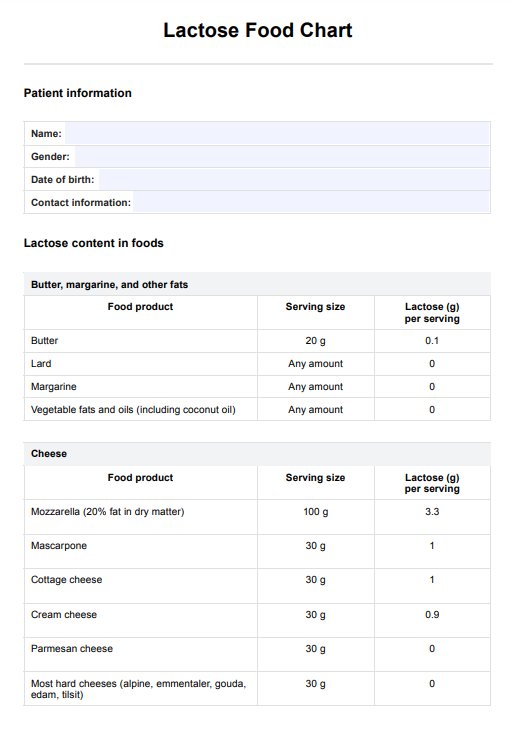FSH Levels
Ensure you have a copy of the FSH Levels Chart to assist you with accurately analyzing and interpreting FSH results from a hormone blood test.


What is an FSH Levels Chart?
Follicle-stimulating hormone (FSH) plays a crucial role in the development of the reproductive system and is extensively utilized in both diagnostic and therapeutic applications within developmental and reproductive medicine (Rose, Gaines Das, & Balen, 2000). An FSH Levels Chart effectively illustrates the normal range of FSH concentrations at various life stages and throughout the menstrual cycle.
Understanding FSH is essential, as it is a critical hormone for reproductive health, particularly for individuals assigned female at birth and those assigned male at birth. In individuals assigned female at birth, FSH is vital for the maturation of ovarian follicles, which are sac-like structures in the ovaries that house developing eggs. In contrast, for those assigned male at birth, FSH facilitates the growth and development of sperm.
The FSH Levels Chart provides a comprehensive overview of what constitutes normal FSH levels across different contexts (University of California San Francisco Benioff Children's Hospitals, 2020). The established normal ranges are as follows:
For females:
- Before puberty, FSH levels typically fall within the range of 0–4 IU/L.
- FSH levels may vary from 0.3 to 10 IU/L during puberty.
- While menstruating, the typical FSH level range is 4.5–21.5 IU/L.
- After menopause, FSH levels tend to increase, ranging from 25.8 to 134.8 IU/L.
For males:
- Before puberty, FSH levels generally range from 0—5 IU/L.
- FSH levels may fluctuate between 0.3—10 IU/L during puberty.
- In adulthood: The usual range is 1.5—12.4 IU/L.
It is essential to note that the ranges found in charts can vary slightly between different laboratories and studies. Additionally, several factors can influence FSH levels, including an individual's weight and various underlying health conditions.
FSH Levels Template
FSH Levels Example
How does our FSH Levels Chart work?
Understanding what an FSH Levels Chart is a significant first step. Now, let's explore how this chart can be a valuable tool for interpreting your hormone levels. Just follow the procedures below:
Step 1: Download the template
For your convenience, ensure you can access a valuable resource, such as the FSH Levels Chart. Download the template on your device. You may print it if you want a physical copy for quick reference.
Step 2: Identify the patient's demographic information
Determine the patient's age, gender, and any relevant physiological conditions, such as pregnancy or menopause. This information is essential for selecting the appropriate FSH range from the chart.
Step 3: Compare FSH test results with the chart
Based on the patient's demographic information, locate the corresponding normal FSH range on the chart. Compare the patient’s FSH test results to these ranges to assess whether they fall within normal limits.
Step 4: Interpret abnormal results
If the patient’s FSH levels are outside the normal range, use the "Interpretation of abnormal FSH results" section to understand potential causes. This section provides insights into what high or low FSH levels may indicate based on gender and physiological conditions.
Step 5: Monitor and re-evaluate
Regular monitoring of FSH levels is important for tracking changes over time. Schedule follow-up tests as your healthcare provider recommends to ensure ongoing hormonal balance and address any emerging health concerns.
When would you use this follicle-stimulating hormone chart?
An FSH Levels Chart is valuable in several contexts primarily related to reproductive health. Understanding when to use this chart is crucial for healthcare providers and individuals seeking to monitor their reproductive well-being. Here's a list of situations where you can utilize the chart:
Assessing fertility
One fundamental application of the FSH Levels Chart is assessing fertility. FSH testing through a blood test can provide insights into an individual's fertility. If FSH levels in the blood sample are outside the normal range, they may indicate potential reproductive issues, making the chart a valuable tool for those planning to conceive.
While FSH levels are typically assessed through a blood test to gain insights into fertility, a urine test might also be employed as part of a comprehensive hormonal evaluation, particularly in complex cases.
Determining menopausal status
The FSH Levels Chart is instrumental in determining menopausal status. A female with an FSH level of 30 IU/L or higher, combined with the absence of menstruation for a year, likely signals the onset of menopause.
Elevated FSH levels can also indicate premature menopause, providing valuable information for diagnosis. While menopause can often be diagnosed based on medical history and symptoms, FSH levels provide an objective measure to confirm this significant life stage.
Understanding menstrual cycle
The FSH Levels Chart helps individuals and healthcare professionals comprehend the fluctuations in FSH levels during the menstrual cycle. These variations are essential for tracking the progress of the menstrual cycle and identifying any irregularities that might impact fertility or overall reproductive health.
During pregnancy
FSH levels can also be of interest during early pregnancy. Approximately 26-30 days after ovulation, a pregnant individual's FSH levels tend to decrease to around 0.1 IU/L. Monitoring FSH levels during pregnancy can provide insights into the health and progression of the pregnancy, contributing to the assessment of factors influencing successful pregnancy.
What do the results mean?
Whether high or low, the FSH Levels Chart results carry significant implications that vary according to an individual's gender and age. These results are vital indicators of hormonal and reproductive health.
High FSH Levels
Elevated FSH levels in females of a very young age can signify several conditions. It may indicate a loss of ovarian function, often associated with menopause, where the ovaries cease to release eggs.
Additionally, high FSH levels in women can be related to polycystic ovary syndrome (PCOS), a hormonal disorder characterized by imbalanced hormones and the development of ovarian cysts. In such cases, high FSH levels suggest an irregularity in the ovarian function and menstrual cycle. These scenarios often prompt individuals to seek fertility treatments to address underlying issues and improve the chances of conception.
In males, when FSH levels rise, it can indicate problems within the testicles, implying issues with the testicular function, potentially affecting sperm production and fertility.
Low FSH levels
Low FSH levels in males may suggest a malfunction in the parts of the brain responsible for regulating hormone production, such as the pituitary gland or hypothalamus. This can lead to an insufficient secretion of crucial hormones, potentially affecting reproductive health and other hormonal processes. Such abnormalities may indicate a pituitary disorder affecting hormone balance.
References
Follicle-stimulating hormone (FSH) blood test. (2020, July 27). Ucsfbenioffchildrens.org. https://www.ucsfbenioffchildrens.org/medical-tests/follicle-stimulating-hormone-(fsh)-blood-test
Rose, M. P., Gaines Das, R. E., & Balen, A. H. (2000). Definition and Measurement of Follicle Stimulating Hormone. Endocrine Reviews, 21(1), 5–22. https://doi.org/10.1210/edrv.21.1.0388
Commonly asked questions
Healthcare practitioners, including general practitioners, endocrinologists, gynecologists, and urologists, typically use an FSH Levels Chart.
FSH level charts are used when the patient has concerns, or the referring physician has a suspicion of issues regarding the patient’s menopause stages, menstrual cycle, fertility, and pregnancy.
FSH-level charts can be used as an educational resource, guide, reference, or even a document where the referring physician can record the patient’s FSH test results and corresponding interpretation.


